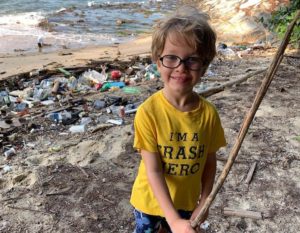
Did you know that there are plans for every household in Singapore to be within a 10-minute walk from a park by 2030? Here’s how the National Parks Board (NParks) is planning more green spaces so families will be able to spend more time outdoors and get closer to nature.
Have you noticed that more outdoor playgrounds and parks have been cropping up all over Singapore lately? From Bidadari Park to the Chinese and Japanese Gardens at Jurong Lake Gardens, you’re never too far from nature. It’s safe to say that many of us parents are delighted, especially with more options for our kiddos to thrive in the great outdoors.
This is all a part of NParks’ vision to transform Singapore into a City in Nature. More trees, gardens, outdoor playgrounds and encounters with local biodiversity? We can’t wait! Here’s what we can look forward to, with efforts to naturalise our gardens and parks in the coming years.
More green spaces for families to thrive in

If you’ve been feeling Singapore getting hotter each day, you’re not imagining things. Climate change is real, and that’s why NParks has been planting more greenery on our sunny island with the help of the community since the 1960s. This is only a sliver of Singapore’s committed effort towards sustainable development.
NParks plans to add 200 more hectares of new nature parks by 2030 and this will help to buffer our nature reserves which contain rich native biodiversity. Plus, we can look forward to over 300 hectares of naturalised parks and gardens. Of course, we’re most excited about having more Nature Playgardens for children to develop through exploration and open-ended play. Some fine examples of Nature Playgardens in Singapore include Coastal PlayGrove at East Coast Park and the expansive Admiralty Park with 26 slides.
That’s not all, NParks is planning 300km of routes that facilitate the movement of biodiversity called Nature Ways, and 500km of park connectors as part of the larger Park Connector Network. That means every household will be within a short 10-minute walk from a park by 2030! To date, NParks has planted 731,805 trees (and counting), and they are well on their way to fulfilling their goal to plant a million more trees in Singapore as part of the OneMillionTrees movement by 2030.
Living side-by-side with Singapore’s wildlife

Parents, we all know the joy our kids experience whenever they see wildlife in Singapore such as the Oriental Pied Hornbill or Smooth-coated Otter. With over 390 species of birds, 480 species of butterflies, 100 species of reptiles and more in Singapore, animal spotting is fast becoming a wholesome national pastime. With more green spaces and thus habitats for wildlife and native tropical flora, we’re excited for more opportunities for kids to spend time in nature as it has a tonne of benefits, including coping with stress, developing psychomotor skills and improving cognitive functioning.
That said, it’s important to co-exist responsibly with our wild neighbours for the safety of both people and wildlife. In any case, here’s a handy tip from NParks: admire our wildlife from a safe distance and continue on your journey. After all, wild animals will typically not attack unless provoked or threatened. Learn more here.
By 2030, you can look forward to 80 hectares of restored forest, marine, and coastal habitats across Singapore, along with restored ecological habitats in at least half of NParks’ gardens and parks! As part of conservation efforts for Singapore’s native biodiversity, there will also be species recovery plans for 100 flora and 60 fauna species.
Want to play a part in transforming Singapore into a City in Nature? Whether it’s teaching your kids about caring for our green spaces or protecting our native wildlife, there’s plenty you can do. Volunteer with NParks to lead guided walks, be involved in horticulture landscaping in parks and gardens or participate in biodiversity watches as a citizen scientist.
Otherwise, simply enjoy the growing abundance of new green spaces with our little ones! Click here to learn more about our City in Nature.
![]() NParks, www.nparks.gov.sg
NParks, www.nparks.gov.sg






 View All
View All





 View All
View All











 View All
View All





![𝗙𝗜𝗥𝗦𝗧 𝗟𝗢𝗢𝗞] 𝗡𝗲𝘄 ‘𝗟𝗼𝘀𝘁 𝗜𝘀𝗹𝗮𝗻𝗱’ 𝗣𝗹𝗮𝘆𝘀𝗽𝗮𝗰𝗲 𝗢𝗽𝗲𝗻𝘀 𝗔𝘁 𝗧𝗵𝗲 𝗔𝗿𝘁𝗴𝗿𝗼𝘂𝗻𝗱
Ahoy, little adventurers! The Artground invites kids aged 9 and under to unleash their imagination and uncover the stories of lost islands inspired by Indonesia. This whimsical landscape is filled of hands-on activities, role-playing games and mythical creatures. Here, kids can create their own stories and discover cultural heritage through play.
Kids can head to The Marketplace, where they can learn about financial literacy through role-playing activities. As they trade, they will get to explore key concepts like saving, spending and managing money.
𝗪𝗵𝗮𝘁 𝘄𝗲 𝗹𝗼𝘃𝗲:
- Our kids loved the slides and stuffed animals that they could use to create stories.
- There are endless ways to play and bond with the kids.
- The ticketed sensory workshop is very engaging and sparks kids’ imaginations.
𝗪𝗵𝗮𝘁 𝘁𝗼 𝘁𝗮𝗸𝗲 𝗻𝗼𝘁𝗲 𝗼𝗳:
- Some parts of the floor are incredibly slippery, so we highly recommend anti-slip socks for kids (and adults if you have them!)
- You only get 75 minutes to play, so be sure to make the most of it!
- The slides are incredibly fast and slippery, so keep an eye on your little ones for safety.
𝗪𝗵𝗲𝗻: Open daily, 9:15am - 6pm
𝗪𝗵𝗲𝗿𝗲: The Artground at Goodman Arts Centre, 90 Goodman Road, #01-40 Block J, Singapore 439053
𝗛𝗼𝘄 𝗺𝘂𝗰𝗵: $5 per person (weekdays), $5 per child (weekends) and $8 per adult (weekends)
Comment ‘Artground’ or tap the link in bio for all the deets!
.
.
.
.
.
#theartground #indoorplayground #goodmanartscentre #sgkids #sgparents #indooractivity #sensoryplay #batik #indonesianislands](https://www.sassymamasg.com/wp-content/plugins/instagram-feed/img/placeholder.png)
